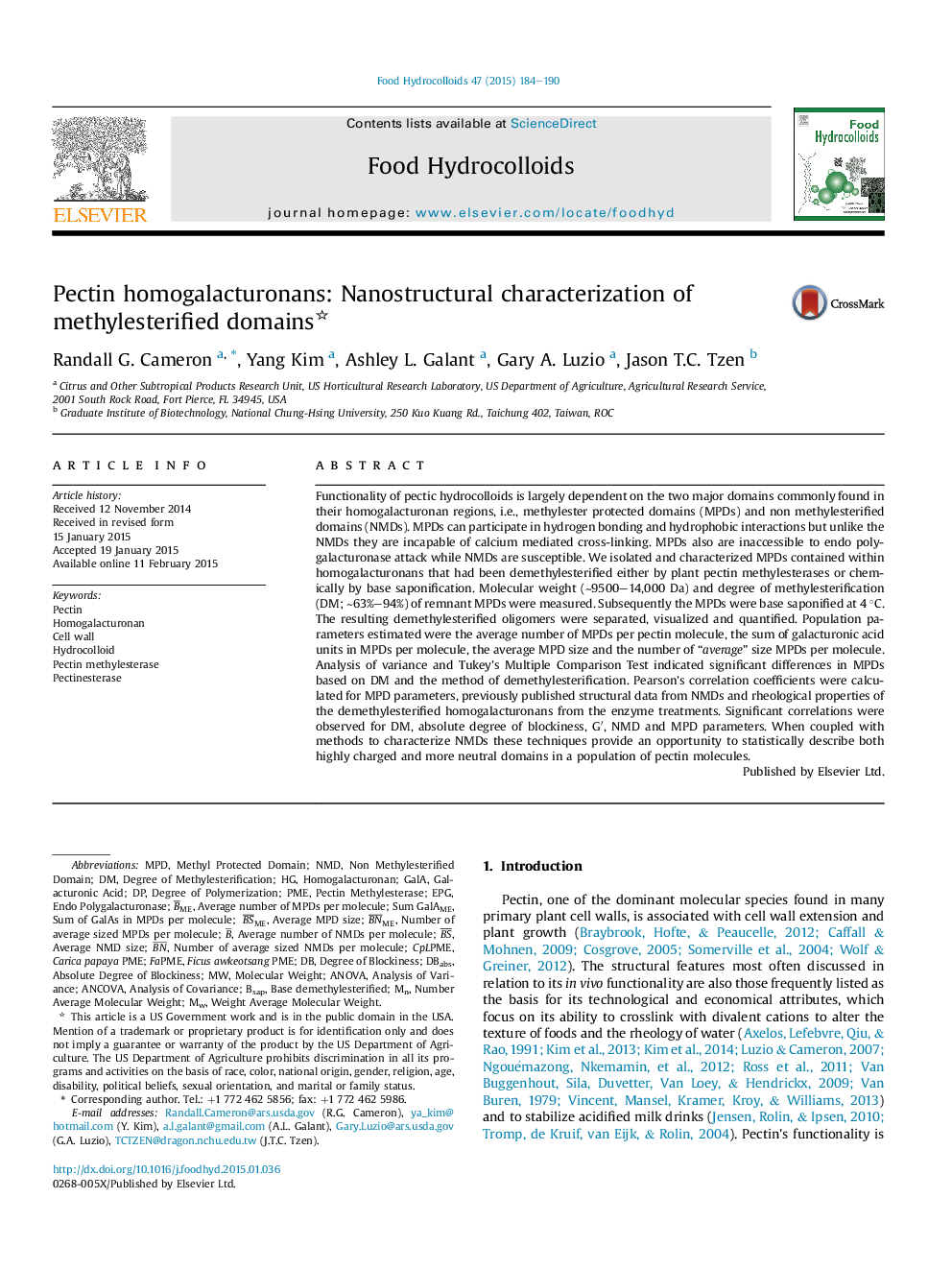| Article ID | Journal | Published Year | Pages | File Type |
|---|---|---|---|---|
| 604421 | Food Hydrocolloids | 2015 | 7 Pages |
•Demethylesterified homogalacturonans were digested with endo polygalacturonase.•MW and DM of resistant, methylester protected domains were estimated.•Methylester protected domains were saponified and chromatographed.•Population parameters related to their size and number per molecule were estimated.•Correlations among esterified and non-esterified domains, and functionality were made.
Functionality of pectic hydrocolloids is largely dependent on the two major domains commonly found in their homogalacturonan regions, i.e., methylester protected domains (MPDs) and non methylesterified domains (NMDs). MPDs can participate in hydrogen bonding and hydrophobic interactions but unlike the NMDs they are incapable of calcium mediated cross-linking. MPDs also are inaccessible to endo polygalacturonase attack while NMDs are susceptible. We isolated and characterized MPDs contained within homogalacturonans that had been demethylesterified either by plant pectin methylesterases or chemically by base saponification. Molecular weight (∼9500–14,000 Da) and degree of methylesterification (DM; ∼63%–94%) of remnant MPDs were measured. Subsequently the MPDs were base saponified at 4 °C. The resulting demethylesterified oligomers were separated, visualized and quantified. Population parameters estimated were the average number of MPDs per pectin molecule, the sum of galacturonic acid units in MPDs per molecule, the average MPD size and the number of “average” size MPDs per molecule. Analysis of variance and Tukey's Multiple Comparison Test indicated significant differences in MPDs based on DM and the method of demethylesterification. Pearson's correlation coefficients were calculated for MPD parameters, previously published structural data from NMDs and rheological properties of the demethylesterified homogalacturonans from the enzyme treatments. Significant correlations were observed for DM, absolute degree of blockiness, G′, NMD and MPD parameters. When coupled with methods to characterize NMDs these techniques provide an opportunity to statistically describe both highly charged and more neutral domains in a population of pectin molecules.
Graphical abstractFigure optionsDownload full-size imageDownload as PowerPoint slide
